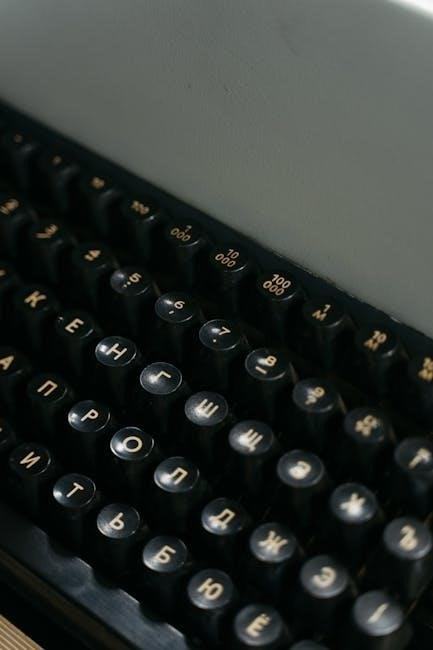realidades 2 answer key pdf
Category : PDF
Realidades 2 Answer Key PDF: A Comprehensive Guide (Updated 11/22/2025)
Today, November 22, 2025, students and educators seek readily available Realidades 2 answer keys in PDF format. These resources aid in self-assessment and understanding workbook exercises, like Practice Workbook 3B-2.
Various platforms, including Slader and official Pearson resources, offer solutions. TNPSC and TSPSC exam relevance also drives demand for these materials.

What is Realidades 2?

Realidades 2 is a widely-used high school Spanish textbook published by Pearson Education, forming part of a comprehensive series designed to build proficiency in the Spanish language. It’s specifically geared towards students who have completed a foundational Spanish course – Realidades 1 – and aims to further develop their communicative skills across listening, speaking, reading, and writing.
The curriculum emphasizes practical vocabulary and grammar, presented within culturally relevant contexts. Accompanying the core textbook are various supplementary materials, including practice workbooks (like 3B-2 mentioned in resources), audio programs, and online components. These resources are crucial for reinforcing concepts and providing students with ample opportunities for practice.
The demand for Realidades 2 answer keys, often sought in PDF format, stems from the need for self-assessment and verification of completed assignments; Students utilize these keys to check their understanding and identify areas requiring further study, ultimately enhancing their learning experience and preparing them for assessments.
The Importance of the Answer Key
The Realidades 2 answer key serves as an invaluable tool for both students and educators. For students, it provides immediate feedback on their work, allowing for self-assessment and identification of areas where they struggle with vocabulary, grammar, or comprehension. This immediate feedback loop is crucial for effective learning and prevents the reinforcement of incorrect concepts.
Access to an answer key, particularly in a convenient PDF format, empowers students to take ownership of their learning process. They can independently review exercises, analyze their mistakes, and seek clarification on challenging topics. This fosters a more proactive and engaged approach to language acquisition.
Educators also benefit significantly, using the answer key to efficiently grade assignments and pinpoint common areas of difficulty within the class. This allows them to tailor their instruction to address specific student needs, maximizing learning outcomes and ensuring comprehensive understanding of the Realidades 2 curriculum.
Where to Find the Realidades 2 Answer Key PDF

Locating a Realidades 2 answer key PDF requires navigating several potential sources. Official Pearson resources are a primary starting point, though access may require purchase or instructor credentials. Numerous third-party websites claim to offer these keys, but caution is advised regarding accuracy and legality.
Platforms like Slader and similar sites often host user-submitted solutions, providing a readily accessible, though potentially unreliable, resource. Supplementary materials for teaching Spanish, utilizing the Realidades series, can also be found online. Searching specifically for “Realidades 2 workbook answers” or “Realidades 2 Practice Workbook 3B-2 answers” yields various results.
However, verifying the accuracy of answers from unofficial sources is crucial. Some websites offer partial answers or require subscriptions. Always prioritize official materials when available to ensure the reliability of the information and support ethical learning practices.
Official Pearson Resources

Pearson Education, the publisher of the Realidades 2 textbook, provides the most reliable source for answer keys. Accessing these resources often requires a verified instructor account or the purchase of accompanying teacher’s editions. These editions typically include complete answer keys for all workbooks, including Practice Workbook 3B-2, ensuring accuracy and alignment with the curriculum.
Pearson’s online platforms, such as MyPearson, may also offer digital access to answer keys for registered educators. While direct PDF downloads of complete answer keys aren’t always freely available, these platforms provide secure and authorized access to essential teaching materials.
Exploring the Pearson website and contacting their customer support are recommended steps for educators seeking official Realidades 2 answer key PDFs. Utilizing these resources guarantees the validity of the solutions and supports effective teaching and assessment practices.
Third-Party Websites Offering Answer Keys

Numerous websites claim to offer Realidades 2 answer keys in PDF format, presenting both opportunities and risks for students and educators. These platforms often compile answers sourced from various online communities and user submissions. While potentially helpful, the accuracy of these solutions isn’t always guaranteed, and may contain errors or outdated information.
Some sites provide answers on a chapter-by-chapter basis, while others offer complete workbook solutions. Caution is advised when using these resources, as relying on incorrect answers can hinder learning and comprehension. It’s crucial to cross-reference information with official Pearson materials whenever possible.
Websites offering supplementary Spanish learning materials, like those for Prentice Hall’s Realidades series, may also host answer keys. Always evaluate the credibility of the source before trusting the provided solutions, and prioritize official resources for reliable accuracy.
Slader and Similar Platforms
Slader, and platforms with similar functionalities, have historically been popular resources for students seeking Realidades 2 answer keys. These websites operate by crowdsourcing solutions, allowing users to submit and view answers to textbook problems. While offering quick access to potential solutions, it’s vital to approach these platforms with caution.
The accuracy of answers on Slader isn’t always verified, and errors are common. Relying solely on these solutions can impede genuine understanding of Spanish grammar and vocabulary. Furthermore, directly copying answers hinders the development of problem-solving skills.

Other platforms mirroring Slader’s approach exist, each with varying degrees of reliability. Students should prioritize using these resources for checking their work after attempting problems independently, rather than as a substitute for active learning. Remember, the goal is comprehension, not simply obtaining the correct answer.
Understanding the Realidades 2 Textbook Structure
The Realidades 2 textbook is meticulously structured to build Spanish proficiency progressively. Each Capítulo typically begins with a communicative activity, introducing key vocabulary and grammatical concepts within a relevant context. Subsequent sections delve deeper into grammar explanations, practice exercises, and cultural insights.
Practice Workbooks, like 3B-2, accompany the main textbook, providing additional reinforcement of the material. These workbooks often feature a variety of exercise types – fill-in-the-blanks, translations, and communicative tasks – designed to solidify understanding.
Understanding this structure is crucial when utilizing an answer key PDF. Knowing where a specific exercise fits within the chapter’s learning objectives allows for targeted review and error analysis. It’s not just about finding the right answer, but understanding why it’s correct within the broader grammatical framework.
Chapter Breakdown and Content Overview
Realidades 2 chapters generally follow a thematic approach, focusing on everyday situations and cultural contexts. For example, chapters might center around shopping, travel, or describing people. Each chapter introduces new vocabulary related to the theme, alongside corresponding grammatical structures.
A typical chapter breakdown includes a “Comenzamos” section for initial engagement, followed by sections dedicated to vocabulary, grammar, and cultural readings. Practice activities progressively increase in complexity, culminating in communicative tasks.
When referencing a Realidades 2 answer key PDF, knowing the chapter’s specific focus is vital. This allows students to pinpoint areas of weakness and concentrate their review efforts. Understanding the content overview ensures the answer key is used as a learning tool, not simply a source for copying answers. Resources like supplementary materials for Spanish 1 and 2 can also aid comprehension.
Practice Workbook 3B-2: A Specific Example

Practice Workbook 3B-2, as noted in available resources, often focuses on reinforcing vocabulary and grammar concepts introduced in Capítulo 3B of Realidades 2. Exercises typically involve completing sentences, answering questions, and translating phrases.
A Realidades 2 answer key PDF for this workbook section would provide solutions to these exercises, allowing students to check their understanding. These answers aren’t merely correct responses; they demonstrate proper application of grammatical rules and vocabulary usage.
Students can utilize the answer key to identify patterns in their errors. For instance, consistently incorrect verb conjugations signal a need for focused review. Accessing this specific workbook’s answers, alongside broader textbook resources, enhances learning. Remember, the goal is comprehension, not just obtaining correct answers, and resources like Slader can be helpful starting points.
Common Challenges Students Face with Realidades 2
Many students encounter difficulties with Realidades 2, often stemming from its fast pace and complex grammatical structures. A key challenge is mastering verb conjugations, particularly irregular verbs, which require extensive practice and memorization.
Vocabulary acquisition also presents a hurdle, as the textbook introduces numerous new words and phrases each chapter. Cultural notes, while enriching, can be challenging to comprehend without sufficient context. Students sometimes struggle with comprehension exercises, requiring a Realidades 2 answer key PDF for self-assessment.
Furthermore, translating between English and Spanish can be tricky, leading to errors in sentence structure and word choice. Utilizing answer keys responsibly – for checking work, not simply copying – is crucial for overcoming these obstacles and building genuine language proficiency.

Vocabulary and Grammar Difficulties
Realidades 2 presents significant vocabulary and grammar hurdles for learners. Students often struggle with the sheer volume of new words introduced in each chapter, hindering reading comprehension and oral fluency. Mastering grammatical concepts like the subjunctive mood and object pronouns proves particularly challenging.
Irregular verb conjugations consistently cause errors, demanding repetitive drills and practice. The nuances of Spanish sentence structure, differing from English, also contribute to difficulties. A Realidades 2 answer key PDF can be invaluable for identifying specific areas of weakness.
Students may find themselves unsure if their sentence construction is correct without a reliable reference. Utilizing the answer key to analyze mistakes, rather than simply obtaining correct answers, fosters deeper understanding and long-term retention of these core language elements.
Cultural Notes and Comprehension
Realidades 2 integrates cultural insights alongside language instruction, but comprehending these nuances can be difficult for students unfamiliar with Hispanic cultures. The textbook presents scenarios and dialogues reflecting customs, traditions, and social norms that require contextual understanding.
Without sufficient background knowledge, students may misinterpret the intent or significance of certain interactions. A Realidades 2 answer key PDF, while primarily focused on linguistic accuracy, can indirectly aid cultural comprehension by clarifying the context of exercises.
Analyzing the answer key’s explanations alongside the cultural notes within the textbook can reveal deeper meanings. Students can cross-reference their interpretations with the provided solutions, fostering a more complete grasp of the cultural elements embedded within the Spanish language.
How to Effectively Use the Answer Key for Learning
A Realidades 2 answer key PDF is a powerful tool, but its effectiveness hinges on how it’s utilized. Avoid simply copying answers; instead, treat it as a self-assessment resource. Begin by completing exercises independently, striving for understanding before consulting the key.
When errors occur, meticulously analyze the correct answer. Identify the specific grammatical rule or vocabulary term causing difficulty. Don’t just note what is wrong, but why.
Use the answer key’s explanations to reinforce concepts. Cross-reference with textbook examples and online resources for further clarification. Regularly reviewing corrected work solidifies learning. Remember, the goal isn’t just a correct answer, but a deeper comprehension of Spanish language principles.
Self-Assessment and Error Analysis
Utilizing a Realidades 2 answer key PDF effectively begins with honest self-assessment. Before checking solutions, complete all exercises to gauge your current understanding. This initial attempt reveals areas of strength and weakness, forming a baseline for improvement.
Upon reviewing the key, meticulously compare your responses. Don’t simply mark incorrect answers; analyze why errors occurred. Was it a vocabulary lapse, a grammatical misunderstanding, or a comprehension issue?
Categorize error types to identify recurring patterns. This focused error analysis pinpoints specific areas needing further study. Use the key’s correct answers as models, reconstructing your thought process to understand the proper approach. This proactive approach transforms mistakes into valuable learning opportunities, maximizing the answer key’s benefit.
Avoiding Direct Copying and Promoting Understanding
While a Realidades 2 answer key PDF provides solutions, its true value lies in fostering comprehension, not enabling direct copying. Resist the temptation to simply transcribe answers; this bypasses the crucial learning process. Instead, use the key as a tool for verification and clarification.
If an answer differs from yours, delve deeper. Analyze the grammatical structures, vocabulary choices, and cultural context within the exercise. Understand why the correct answer is accurate, and how it applies to the broader concepts taught in the chapter.
Focus on mastering the underlying principles of Spanish, rather than memorizing responses. The goal is to develop genuine language proficiency, allowing you to independently apply your knowledge. Utilizing the answer key for guided self-correction promotes lasting understanding and prevents superficial learning.
Realidades 2 and Spanish Language Learning
Realidades 2 serves as a cornerstone for many high school Spanish programs, building upon foundational concepts. The accompanying practice workbooks, and consequently the Realidades 2 answer key PDF, are vital components of this learning journey. They reinforce grammar, expand vocabulary, and introduce cultural nuances.
Effective Spanish acquisition requires consistent practice and self-assessment. The answer key facilitates this by providing immediate feedback on exercises, allowing students to identify areas needing improvement. It supports independent study and encourages a proactive approach to learning.
However, remember that textbooks and workbooks are tools, not replacements for immersive experiences. Supplementing Realidades 2 with real-world interactions, such as conversations with native speakers or exposure to Spanish media, will significantly enhance language proficiency. The answer key is best used to solidify understanding gained through diverse learning methods;
The Role of Workbooks in Spanish Proficiency
Workbooks like those accompanying Realidades 2 are instrumental in developing Spanish proficiency, bridging the gap between classroom instruction and practical application. The Realidades 2 answer key PDF unlocks the potential of these workbooks, enabling students to verify their understanding and correct errors independently.
These workbooks provide structured practice in key areas like verb conjugations, sentence construction, and vocabulary acquisition. Access to the answer key transforms them into self-paced learning tools, allowing students to work at their own speed and focus on challenging concepts.
However, workbooks are most effective when used in conjunction with other learning resources. They shouldn’t be viewed as a shortcut, but rather as a means to reinforce concepts learned through textbooks, class discussions, and real-world interactions. Utilizing the answer key responsibly promotes genuine comprehension, not just rote memorization.
TNPSC and TSPSC Exam Relevance (Contextual Information)

While seemingly unrelated, the demand for resources like the Realidades 2 answer key PDF extends to competitive exam preparation in India, specifically the Tamil Nadu Public Service Commission (TNPSC) and Telangana State Public Service Commission (TSPSC) exams. These exams often include sections assessing language proficiency, and a foundational understanding of Spanish can be advantageous.
Although not a direct requirement, familiarity with Spanish grammar and vocabulary, as taught in courses utilizing Realidades 2, can improve a candidate’s overall linguistic aptitude. The answer key aids in solidifying these foundational skills, allowing for focused self-study.
Candidates preparing for these exams may utilize Spanish learning materials to broaden their skillset. Access to accurate answer keys for practice exercises ensures efficient and effective preparation, contributing to a more comprehensive understanding of linguistic principles.
Realidades 2 answer key PDFs are valuable learning tools, but their use demands ethical consideration. These resources should never be employed for academic dishonesty, such as directly copying answers during assessments. The primary purpose of an answer key is to facilitate self-assessment and identify areas needing improvement.
Students should strive to understand the underlying concepts and grammatical structures, rather than simply memorizing solutions. Utilizing the answer key to check work after attempting problems independently promotes genuine learning and skill development.
Reliance on answer keys without effort hinders language acquisition. Educators and institutions should emphasize the importance of academic integrity and responsible resource utilization. Proper use fosters a deeper comprehension of Spanish, ultimately enhancing language proficiency.






































































